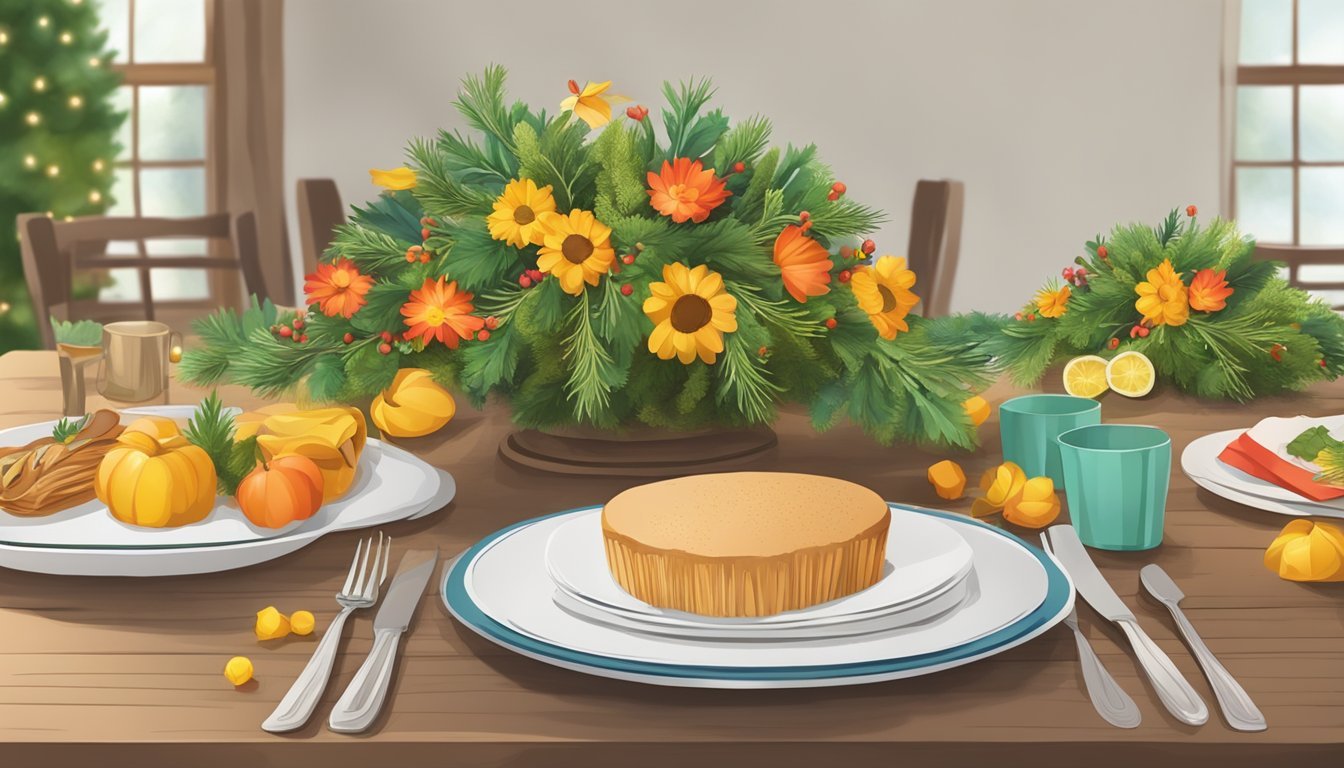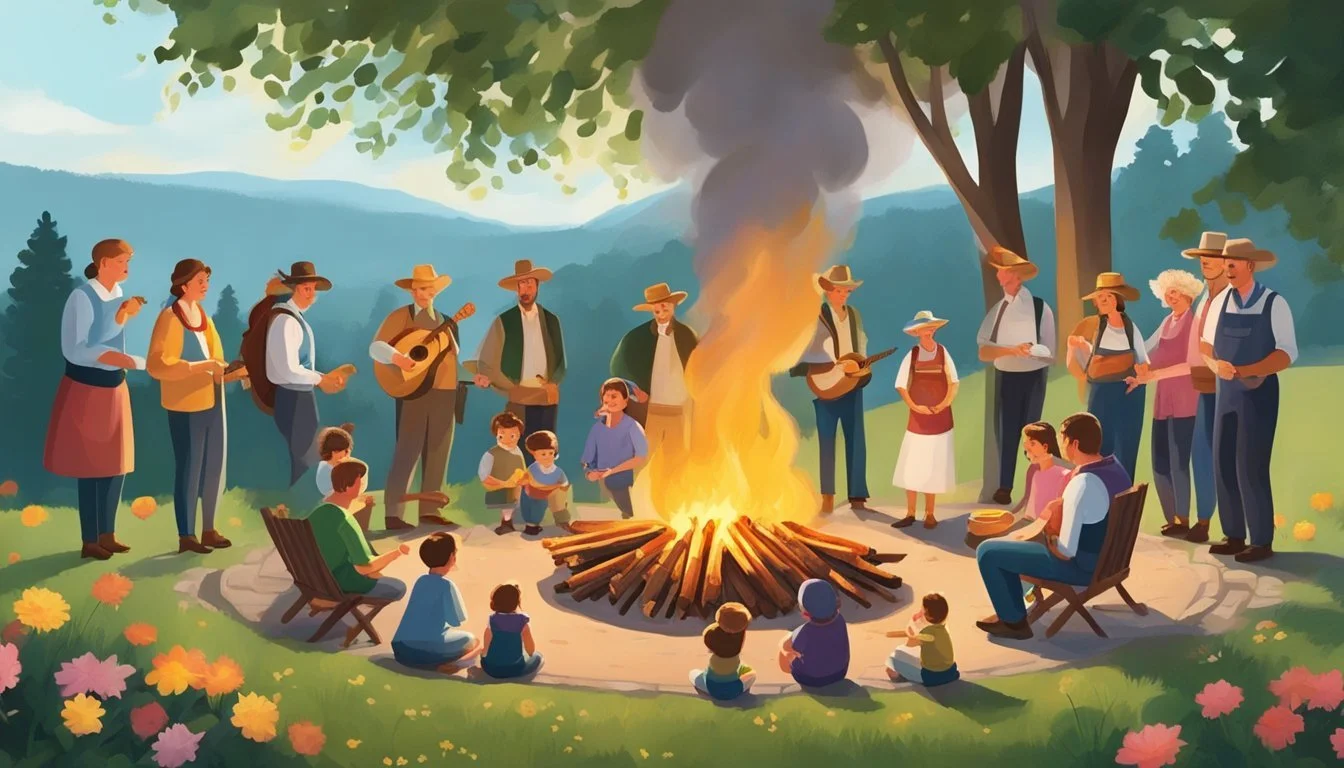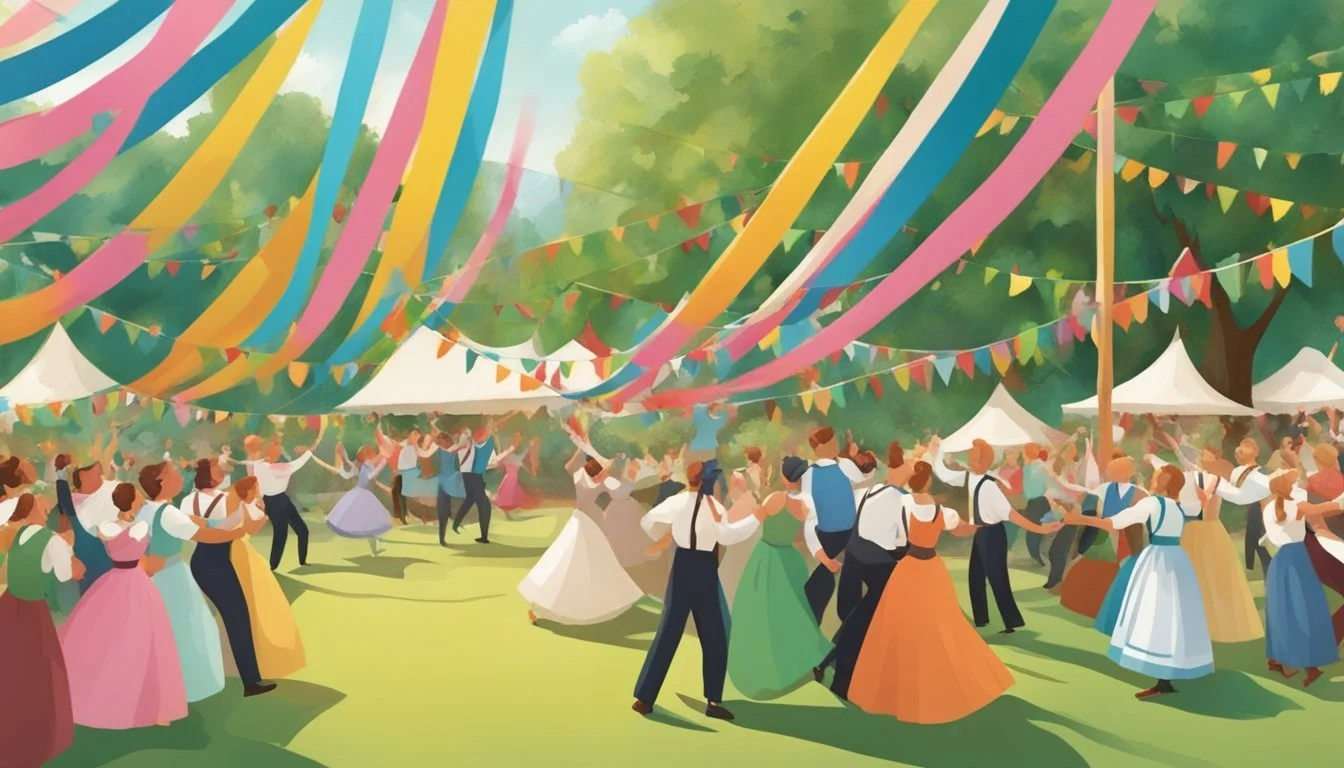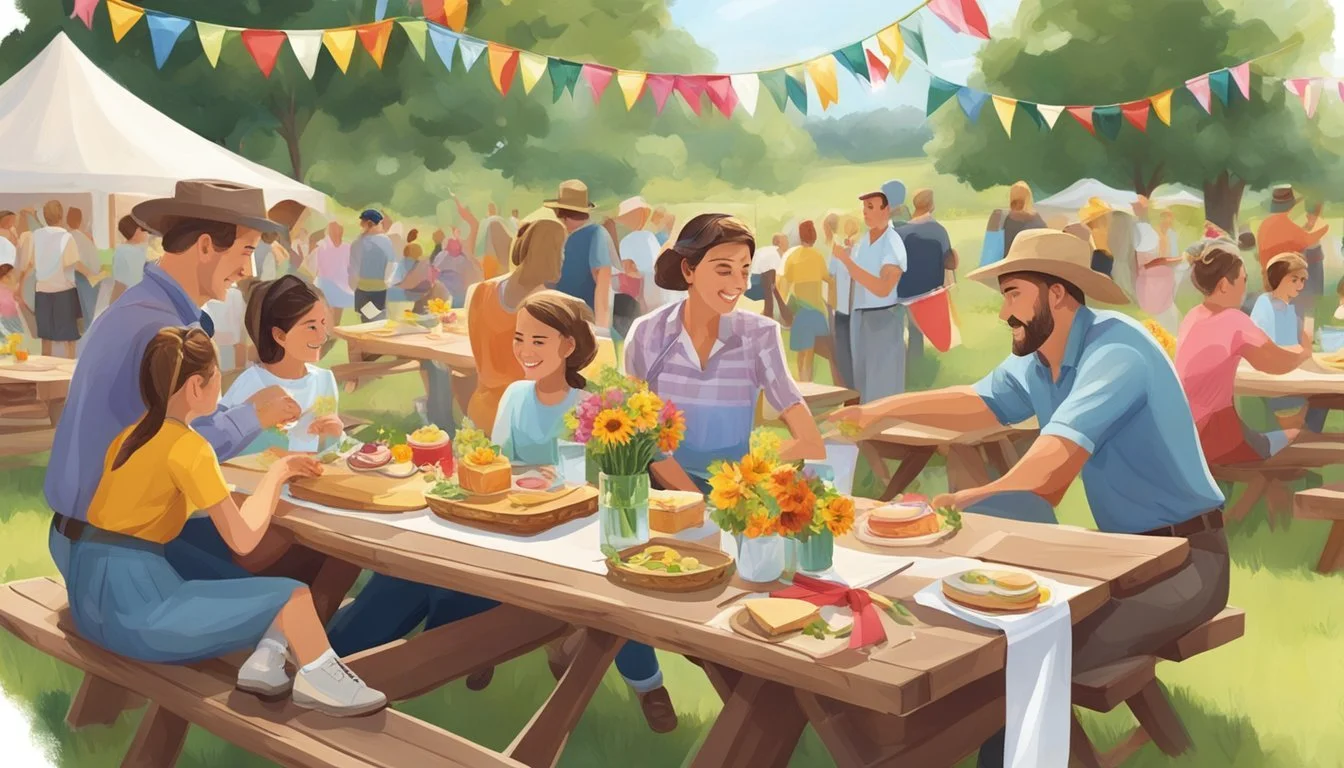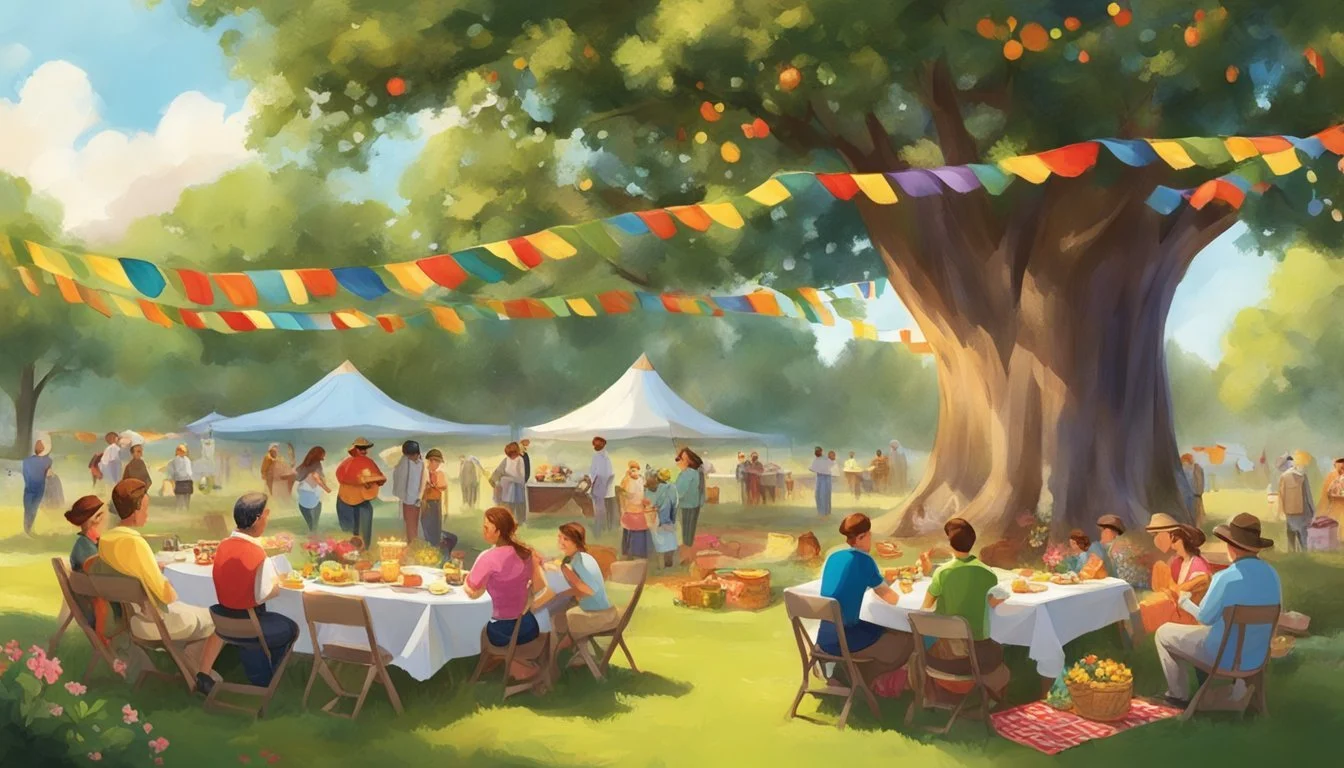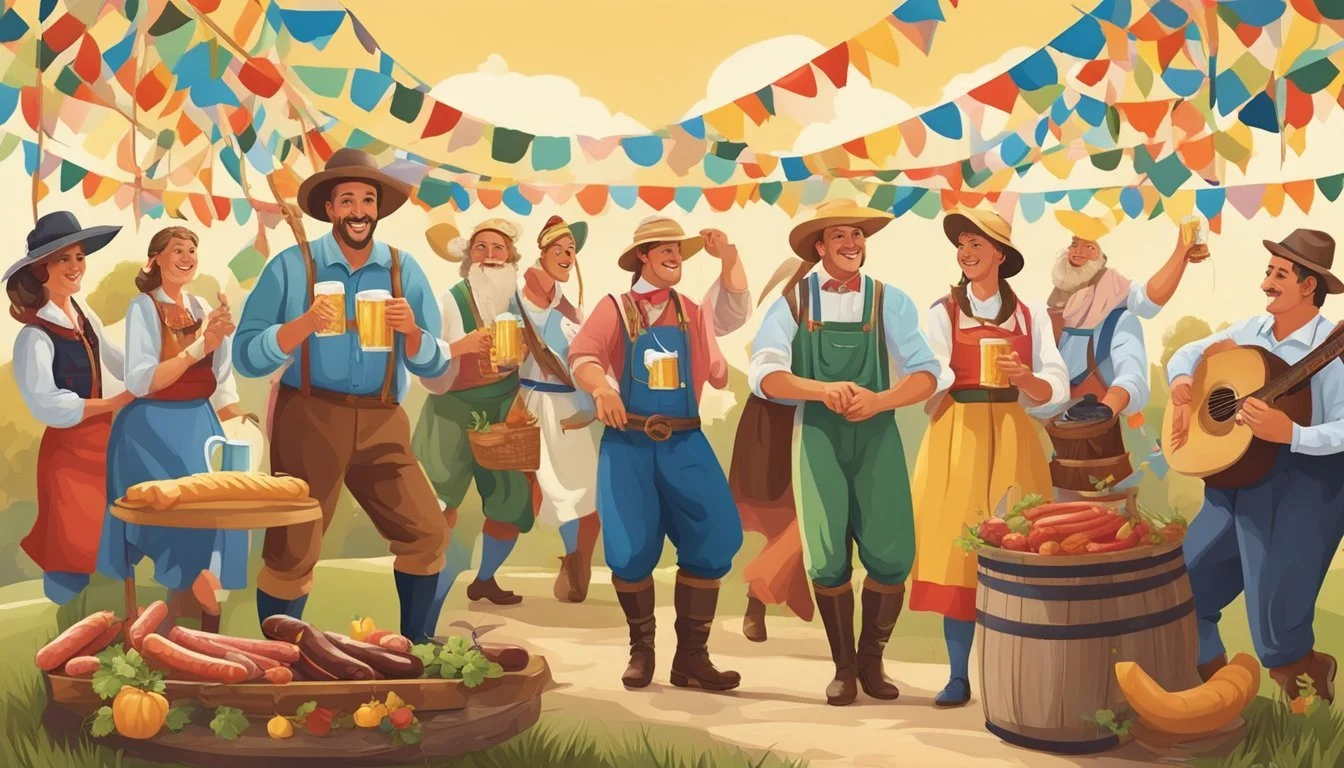German Texan Traditions for Pfingsten
Celebrating Pentecost with Cultural Flair
Pfingsten, known as Pentecost in English, holds a significant place both in German culture and among German Texan communities. As a celebration marking the descent of the Holy Spirit upon the apostles, Pentecost is observed with a rich tapestry of traditions and religious reverence. German Texans, with their robust heritage, blend these customs into their own unique celebration of the holiday, displaying a fusion of cultures that have evolved over time.
In these communities, Pentecost is not just a religious observance but also a time for social gatherings, reinforcing both faith and cultural identity. To honor this day, German Texans often participate in church services decorated with red accents, symbolizing the flames of the Holy Spirit. The festivities extend beyond the church walls into family homes and community spaces, where traditional German customs intertwine with Texan hospitality.
Alongside church-related activities, German Texans may organize folk dances, choir performances, and shared meals featuring German cuisine (What Wine Pairs Perfectly With German Cuisine) adapted to Texan tastes. These gatherings reinforce camaraderie and the importance of cultural preservation, ensuring that the spirit of Pfingsten remains a vibrant and integral part of their heritage.
Historical Context
The historical context of Pfingsten, or Pentecost, is deeply rooted in a blend of religious and cultural practices, spanning back thousands of years with traditions evolving from pre-Christian times and the widespread influence of German immigrants on Texan culture.
Origins of Pfingst Celebrations
Pentecost, known as Pfingsten in Germany, is a Christian holiday commemorating the descent of the Holy Spirit upon the apostles and other followers of Jesus Christ. It occurs on the 50th day after Easter Sunday, which itself is the culmination of the 49 days following Easter, marking a significant event in Christian traditions. The roots of Pentecost celebrations, however, can be traced back to pre-Christian times. The holiday integrates aspects of earlier spring festivals which were times of feasting and were likely held for thousands of years before they were adapted into Christian traditions.
Influence of German Traditions on Texan Culture
German settlers brought their Pentecost traditions with them to Texas in the 19th century, where these customs were woven into the fabric of local culture, contributing to the state's diverse cultural landscape. These traditions included both religious activities, honoring the descent of the Holy Spirit, and secular festivities symbolizing community and heritage. The impact of German heritage is evident in Texan towns such as Fredericksburg and New Braunfels, where Pentecost is celebrated with events that not only display the religious significance but also embrace the festive spirit brought forth by German customs.
Pfingsten Celebrations
Pfingsten, prominently known as Pentecost among the German Texan community, is observed with a blend of rich religious traditions and communal festivities that highlight the unique heritage of the area.
Pfingsten in Rural Texas
In rural Texas, German settlers have infused local culture with their customs, making Pentecost a notable holiday in localized communities. These communities typically celebrate with family gatherings and neighborhood picnics, embracing a sense of togetherness. Here, the holiday is not only a religious observance but also an opportunity for reinforcing community bonds.
Church Services and Religious Observances
Church services play a pivotal role in observing Pentecost, with local German Texan churches conducting special sermons in both English and German to accommodate all congregants. The services often include the release of doves, symbolic of the Holy Spirit's descent, and the singing of traditional hymns, thus preserving the blend of linguistic and cultural heritage.
Key Elements of Church Services during Pfingsten:
Bilingual sermons
Traditional hymns in German
Release of doves
Festivals and Public Events
The public events marking Pfingsten often feature festivals that include colorful parades and live public performances. Dancing, particularly traditional German dances, is commonly enjoyed alongside German music bands. These events provide an immersive experience that underscores the community's collective identity and shared history.
Festival Highlights:
Traditional German dances and music
Cultural parades
Authentic German cuisine at stalls
Cultural Practices
In German Texan communities, Pfingsten, or Pentecost, is marked by distinct traditions that blend religious significance with regional customs. These practices often involve elaborate decorations, processions, and cultural expressions that are both solemn and celebratory.
Pfingstbaumpflanzen and Pfingstenkranz
The Pfingstbaumpflanzen, or the planting of the Pentecost tree, is a custom where communities erect birch trees or poles, signifying new life and the season’s abundance. These poles are commonly adorned with flowers, ribbons, and greenery. Accompanying this tradition is the crafting of a Pfingstenkranz, a wreath that incorporates fresh flowers and birch leaves, symbolizing the Holy Spirit's renewal.
Processions and Decorations
Pentecost in German Texan regions is often celebrated with a procession. The community comes together, parading through the streets with the decorated Pfingstbaum and Pfingstenkranz. Homes and public spaces are decked with wreaths and green branches, creating a festive ambience that honors both religious and cultural heritage.
Traditional Songs and Dances
Celebrations of Pfingsten are enriched with traditional songs and dances that have been passed down through generations. These musical traditions serve not only as entertainment but also as a means of preserving the German Texan identity. Songs are usually performed in German, maintaining the linguistic heritage, while dances often display patterns that reflect historical German styles.
Cattle and Agriculture
In German Texan traditions related to Pfingsten, the focus on cattle and agriculture underscores the community's reverence for their livelihood and heritage. This section explores the customary blessings dispensed on these crucial elements of rural life and their role in festival observances.
Blessing of the Cattle and Fields
During Pfingsten, it is a tradition among German Texans to conduct a blessing of the cattle and fields. They acknowledge the importance of fertile spring conditions for the prosperity of their agriculture and livestock. This fertility rite is deeply rooted in their cultural practices, often performed by local clergy, and is seen as an integral part of ensuring a fruitful year ahead.
Cattle: Special focus is placed on prize cattle, which are often showcased during Pfingsten. Blessings are sought to protect these valuable assets from disease and to promote health and productivity throughout the year.
Fields: Farmers take this time to ask for their fields to be productive, seeking divine favor to enhance the growth of crops and protect them from pests and natural hardships.
Role of Agriculture in Celebrations
Agriculture not only forms the backbone of the German Texan economy, but it also plays a pivotal role in their Pfingsten celebrations. Both cattle and crops are integral to the festivities, with traditional dishes that reflect the season's harvest being a highlight of the communal feasting.
Stables and Fields: They serve as a gathering point not just for the blessing but also for subsequent celebrations, symbolizing the harmony between daily work and religious observance.
Agricultural Produce: Feasts often feature fresh produce from local fields, and stalls may offer a variety of goods, including preserves made from the first fruits of the season, emphasizing the community's connection to their land.
The actions performed during this period not only display a deep connection to their agrarian roots but also blend historical customs with contemporary practices, thus keeping their heritage alive and thriving.
Symbolism and Significance
Pfingsten, known as Pentecost in English, is rich with symbols and meanings that reflect its religious origins and seasonal celebrations. The presence of the Holy Spirit and themes of fertility are particularly emphasized through various customs and traditions.
The Holy Spirit and the Dove
The Holy Spirit is central to the Pentecost celebration, signifying the descent of God’s spirit upon the followers of Jesus. The dove commonly represents this aspect of Pentecost, symbolizing peace and purity. In German Texan traditions, the dove imagery is prominent in church decorations and artwork during Pfingsten, effectively capturing the importance of the Holy Spirit in the festivities.
Birch Twigs and Fertility
Birch twigs hold a special place in Pentecost traditions, weaving together themes of fertility and new beginnings. They are often used to decorate homes and public spaces to invite growth and prosperity. The use of birch is symbolic of the spring turning into summer, representing the fruitful expansion of the earth's fertility. German Texans might also incorporate these symbols into local spring funfairs, marking the transition from the spring to the summer season.
Regional Variations
In Texas, the observance of Pentecost, known as Pfingsten, showcases a rich tapestry of traditions blending from German roots with local Texan culture. These traditions reflect the diverse heritage of German immigrants and the unique variations they've developed in the Lone Star State.
Customs Specific to German Texans
German Texans often celebrate Pfingsten in ways that hark back to their ancestral origins, particularly from regions like North Rhine-Westphalia, Bavaria, Saxony, and Lower Saxony. One notable tradition is the Easter Fire, which is ignited the night before Pentecost; this is reminiscent of the Easter fires that are popular in many parts of Germany, symbolizing the light of Christ. German Texans might also participate in the Pentecostal Walk, a practice whereby community members wander through fields and meadows, praying for a fruitful year—a custom that is still observed in rural areas in Germany.
Local Variations Across Texas
Across the diverse landscapes of Texas, local variations of Pfingsten emerge, combining German customs with Texan flair. For instance, in Central Texas, where many German settlers originally made their homes, one might find a blend of traditional local customs, such as:
Dance Halls: Featuring polka bands, echoing the communal dances of Bavaria and Saxony.
Potluck Feasts: With an array of dishes that merge German holiday favorites with southern staples.
In the Texas Hill Country, influenced by Lower Saxony traditions, one might observe small-scale parades with floats adorned with symbols of the Holy Spirit—such as doves. While not as widespread as the major German holidays of Christmas and Oktoberfest, Pfingsten provides an opportunity for German Texans to celebrate their heritage and add local flavors to time-honored customs.
Modern Day Observances
In Texas, where diverse cultural roots intertwine, German Texan communities maintain their heritage by observing Pfingsten, aligning with the traditional Christian holiday of Pentecost. Celebrations embody both religious reverence and social gatherings, reflecting a blend of historical customs and modern practices.
Pfingsten in Contemporary German Texan Society
German Texans recognize Pfingsten as an opportunity to honor their heritage through festivity and fellowship. Church services are held to commemorate the Holy Spirit's descent, often incorporating hymns and prayers in German to preserve linguistic traditions. Socially, the occasion may prompt community gatherings, including picnics, music, and dance, where traditional German foods and folk songs reinforce cultural bonds.
Public Life and Legal Status
Despite its cultural significance among German Texans, Pfingsten is not officially designated as a public holiday in Texas. Therefore, public life largely continues as usual. Entities such as railway stations, airports, and highways operate on a normal Sunday timetable with no special adjustments for Pfingsten. No mandated restrictions apply on this day, and establishments categorized as tourist stores often remain open to serve visitors and residents alike.
Public Entities Pfingsten Status Public Transport Normal operations; regular Sunday hours Shops & Businesses Generally open; no legal closures Government Offices Closed as usual on Sundays
Conclusion
Pfingsten, or Pentecost, is a vibrant and significant event within the German Texan community, embodying a fusion of deep-rooted German traditions and Texan cultural influences. As summer approaches, this festive period becomes a focal point for communal gatherings and shared joy.
German Texans observe Pentecost through various traditional activities:
Cultural Festivities: They hold numerous parades and local festivals that showcase a blend of German and Texan heritage. Music, dance, and traditional German attire are prominently featured.
Church Services: Reflecting its religious origins, special church services play a central role, with an emphasis on the Holy Spirit's descent. Congregations often come together in larger numbers than usual, underscoring the sense of community.
Family and Food: Families unite to indulge in feasts which typically include German delicacies alongside Texan barbeque, symbolizing the melding of cultures.
The celebration of Pfingsten fosters a sense of togetherness and joy among German Texans, bridging generational and cultural gaps. It reinforces their identity and the continuity of their ancestral customs amidst the diverse cultural landscape of Texas. The longevity of these traditions stands as a testament to their value within the community, ensuring that the essence of Pfingsten remains a vibrant part of German Texan life for generations to come. In doing so, Pfingsten remains not just a summer festivity but a reaffirmation of communal bonds and joyous spirit.

